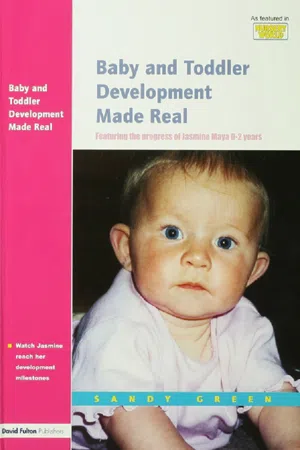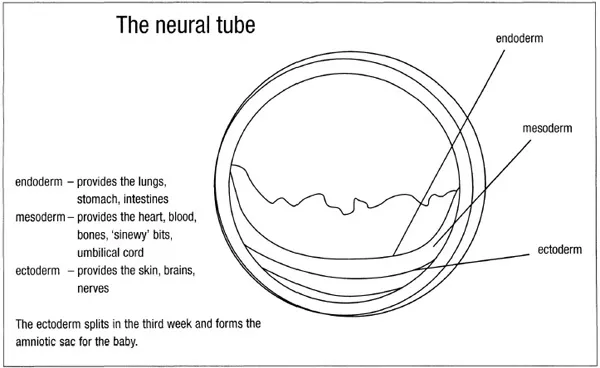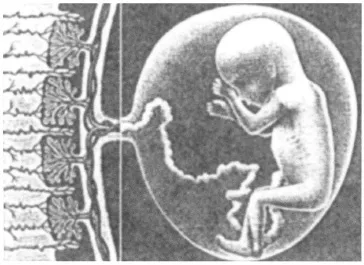
eBook - ePub
Baby and Toddler Development Made Real
Featuring the Progress of Jasmine Maya 0-2 Years
This is a test
- 176 pages
- English
- ePUB (mobile friendly)
- Available on iOS & Android
eBook - ePub
Book details
Book preview
Table of contents
Citations
About This Book
Following the progress of Jasmine Maya, the book examines every part of baby care and development, including: bathing, changing, clothing; health and safety, immunisation; the role of the midwife and health visitor; feeding and weaning; play, stimulation, toys and books; and theories and theorists.
Frequently asked questions
At the moment all of our mobile-responsive ePub books are available to download via the app. Most of our PDFs are also available to download and we're working on making the final remaining ones downloadable now. Learn more here.
Both plans give you full access to the library and all of Perlego’s features. The only differences are the price and subscription period: With the annual plan you’ll save around 30% compared to 12 months on the monthly plan.
We are an online textbook subscription service, where you can get access to an entire online library for less than the price of a single book per month. With over 1 million books across 1000+ topics, we’ve got you covered! Learn more here.
Look out for the read-aloud symbol on your next book to see if you can listen to it. The read-aloud tool reads text aloud for you, highlighting the text as it is being read. You can pause it, speed it up and slow it down. Learn more here.
Yes, you can access Baby and Toddler Development Made Real by Sandy Green in PDF and/or ePUB format, as well as other popular books in Education & Education General. We have over one million books available in our catalogue for you to explore.
Information
| 1 | Pregnancy, birth and the neonate |
Pregnancy and foetal development
Beginnings
The zygote
Once conception has taken place and the fertilised ovum has implanted itself in the wall of the uterus, the outer layers of this cluster of cells begin to form the placenta, while the inner cells will develop into the baby. From conception to implantation this developing ‘being’ is referred to as a ‘zygote’.
Following implantation the term used changes to ‘embryo’. The embryo develops within an amniotic sac (see Figure 1.1).

Figure 1.1 From conception to implantation
The amniotic sac
The amniotic sac is made up of two thin layers of tissue. The outer layer (the chorion) and the inner layer (the amnion). It is the muscular bag of fluid in which the embryo develops. Its four main functions are to:
• maintain a constant temperature
• protect the embryo from shock and knocks
• help to prevent infection
• give the embryo freedom of movement.
The amniotic fluid
Amniotic fluid is made up of water, salts, fats, and later on foetal urine too. At 16 weeks there is approximately 250 ml (9 fl oz) of fluid, and by 22 weeks there is approximately 800 ml (29 fl oz) of fluid, which remains stable until around 39 weeks when it begins to reduce. By delivery, fluid levels have usually dropped to at least 500 ml (18 fl oz), but are lower if the delivery is delayed. Amniotic fluid absorbs foetal waste throughout the pregnancy. It is swallowed and passed by the foetus (the term used from eight weeks onwards). Fluid levels are monitored during both routine and specific ultrasound scans, as lack of sufficient fluid can indicate a potential problem in some pregnancies. Information on ultrasound scans can be found on page 10.
The neural tube
The neural tube begins to form from the end of the third week, as the central nervous system of the embryo starts to develop. Its outer layer is called the ectoderm (forming skin, brain and nerves).

Figure 1.2 A cross-section of the neural tube roll
As Figure 1.2 shows, if viewed as a cross-section the next (inner) layer is the ‘mesoderm’ (forming heart, blood, bones, ‘sinewy’ bits and umbilical cord), and the most central layer is the ‘endoderm’ (forming the lungs, stomach and intestines).
The embryo
By week four, arm and leg buds are visible and the heart begins to beat. By six weeks, finger buds are beginning to develop (see Figure 1.3), although the arms are still very short. Both the heart and liver can now be identified with specialist equipment. Between six and eight weeks the vertebrae, which will protect the already developing spinal cord, are forming, and at eight weeks the term used changes from ‘embryo’ to ‘foetus’.

Figure 1.3 Finger buds
The foetus
Everything that the infant is going to have at birth has now been established. Foetal development is a stage of growth in which detail is completed, building on the earlier (embryo) stage of formation. The muscles have started to work already and by 12 weeks the limbs are constantly moving. The sex organs are well developed and soft nails and teeth are now forming.
By 20 weeks the foetus can suck and grip. He has been able to hear for some time now and will be making strong movements that can usually be felt by the mother. By 22 weeks the foetus is covered with a soft downy hair called ‘lanugo’, and by 24 weeks a protective substance secreted by the sebaceous glands (vernix caseosa’) coats the skin. The mother may be able to identify sleep patterns now in her unborn infant (Figure 1.4).

Figure 1.4 An infant in the womb
At 28 weeks the foetus is usually considered to be medically ‘viable’. This means that the main physiological systems (for breathing, the nervous system and circulation) are usually well enough developed for a reasonable chance of survival if the baby is delivered early for any reason. The foetus would now be around 23 cm (9 inches) in length and weighing around 1.220 kg (2 lb 10 oz).
By 36 weeks, most infants are positioned for birth with the head well down. Delivery of a full-term infant usually takes place at around 40 weeks.
Jasmine’s development in the womb

Jasmine’s development in the womb was confirmed early in her mother’s pregnancy, enabling her to start taking folic acid immediately (see page 9 for information on the benefits of folic acid). The pregnancy was described as ‘unremarkable’, since there were no causes for concern and no relevant family or medical history to take into account.
It was a first pregnancy for Jasmine’s mother, who is of a slight build. Although she initially lost weight rather than gaining it, due to pregnancy sickness, she eventually gained weight healthily. Her sickness lasted until around 20 weeks and she was given an iron supplement to improve her lowered haemoglobin levels. Routine blood and urine tests were carried out without any unusual outcomes and ultrasound scans were taken at 20 weeks (Figure 1.5) and then again at 37 weeks.
At 20 weeks the routine ultrasound scan showed that Jasmine’s bone development and head circumference gave a reading of 19 + 5 weeks’ gestation. The amniotic fluid levels indicated 19 + 1 weeks. According to her own dates, Jasmine’s mother was 19 + 3 weeks pregnant, therefore the scan indicated that the foetus (Jasmine) was developing well within normal parameters.
Towards the end of her pregnancy Jasmine’s mother’s weight gain ceased and a scan at 37 weeks was used to check that all was well, which it was.

Figure 1.5 An ultrasound scan of Jasmine at 20 weeks
Factors that can influence development before birth
There are many factors which can affect an infant before birth, and even prior to conception. If a pregnancy is planned the woman can help prepare her body so that the optimum environment for a pregnancy is created, for example by giving up smoking, avoiding alcohol altogether (or at the very least reducing it to a minimum), avoiding the use of drugs – prescribed, over-the-counter, or recreational – and eating healthily. Getting sufficient fresh air and rest is also beneficial.
Taking a folic acid supplement helps provide for optimum central nervous system development and is recommended from before conception (or as soon as pregnancy is suspected) up to three months into the pregnancy.
Table 1.1 Effects of smoking, alcohol and drugs on foetal development
| Substance | Potential effects on developing foetus |
| Smoking (tobacco and other substances) | Low birth-weight is common due to nicotine being released into the body Can also lead to learning difficulties Thought to be a possible link to sudden infant death syndrome (also known as SIDs or cot death) |
| Alcohol | Foetal alcohol syndrome (FAS) is caused by women consuming large quantities of alcohol during pregnancy. FAS causes developmental delay, learning difficulties and deformities Alcohol can impair judgement and increase the risk of accidents |
| Drugs | Drugs such as cocaine cause low birth-weight and developmental delay Infants can be born addicted and suffer terrible withdrawal symptoms All round development problems are common, together with epilepsy Drugs are always prescribed with care to pregnant women to avoid complications It should be remembered that cough and cold remedies are also drugs and their suitability should be checked with a GP or pharmacist All non-essential drugs should be avoided during pregnancy |
Eating well during pregnancy helps ensure that both mother and child have sufficient nutrients. It is also wise for pregnant women to avo...
Table of contents
- Cover
- Title
- Copyright
- Contents
- Acknowledgement
- Introduction
- 1 Pregnancy, birth and the neonate
- 2 An introduction to general development (one month to two years)
- 3 A brief look at developmental theories
- 4 Caring for babies and toddlers
- Appendix: Answers to checkpoint questions
- Glossary
- References and further reading